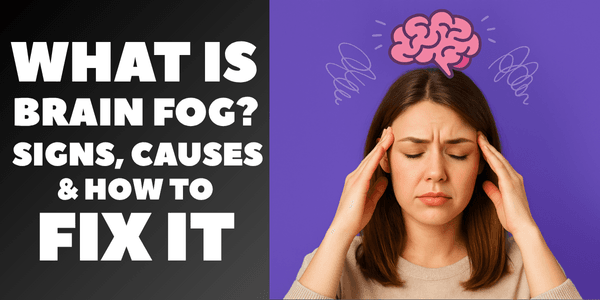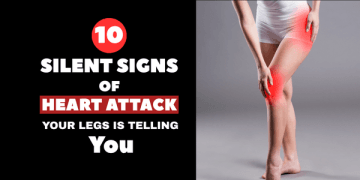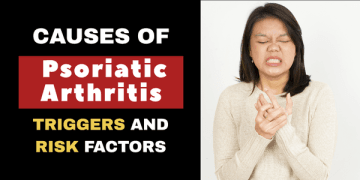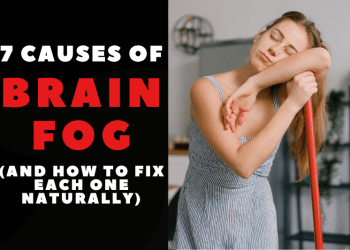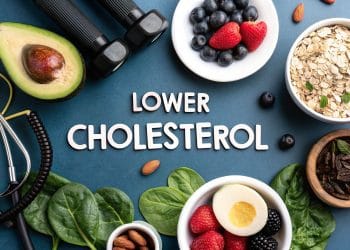Last Updated on June 19, 2025 by Lauretta Iyamu, PharmD
Are you constantly feeling tired, experiencing bone pain, or suffering from frequent infections? These could be signs of a vitamin D deficiency, a common yet often overlooked health issue.
Learn how this nutrient impacts your body, recognize the common vitamin D deficiency symptoms, and find out how to address and prevent deficiency to improve your
Why is Vitamin D Important?
Vitamin D deficiency is widespread and affects people of all ages worldwide. In the United States, much of the population does not have enough vitamin D. Various factors contribute to this widespread problem [3].
Vitamin D is essential for your body. It helps keep your bones and teeth strong, supports your immune, brain, and nervous systems, regulates insulin levels, and helps your lungs and heart function well.
One of its main jobs is to help your body absorb the calcium necessary for strong bones. Without enough vitamin D, your bones can become weak and more likely to break [1].
Vitamin D also helps your immune system fight off infections. A lack of vitamin D can make you more likely to get sick, with higher risks of illnesses like the flu and upper respiratory infections. It also helps reduce inflammation in your body [2].
Causes of Vitamin D Deficiency

Limited Sun Exposure
Your skin makes vitamin D when it is exposed to sunlight. If you don’t get enough sun, especially in winter, your body may not produce enough vitamin D [4].
Poor Diet
Not many foods naturally contain vitamin D, so it’s hard to get enough from diet alone, making supplements and fortified foods important [5].
Skin Color
People with darker skin have more melanin, which reduces the skin’s ability to produce vitamin D from sunlight. This makes them more susceptible to deficiency [6].
Age
As you age, your skin’s ability to make vitamin D decreases, putting older adults at greater risk for deficiency [7].
Health Conditions
Certain health conditions, like obesity and diseases that affect fat absorption (such as Crohn’s disease), can affect how your body uses vitamin D [8].
What Are Symptoms of Vitamin D Deficiency?

Vitamin D deficiency can appear in many ways, and the symptoms can be subtle or severe, depending on your levels. Here are some common symptoms:
Fatigue
Feeling extremely tired and lacking energy are common signs of vitamin D deficiency. Persistent tiredness can make it hard to get through your day [9].
Bone Pain and Ache
You might feel bone pain, especially in the lower back and legs. This happens because your body can’t absorb enough calcium without vitamin D [3].
Muscle Weakness
Weak muscles, especially those near your trunk, like the upper arms or thighs, can be a symptom of low vitamin D levels. This can make everyday tasks harder [7].
Depression
There is a clear link between low vitamin D levels and a higher risk of depression. Vitamin D helps protect the brain and reduce inflammation, which affects how the brain works [6].
Anxiety
Low vitamin D levels are linked to higher levels of anxiety, especially in older adults. Vitamin D is important for keeping your mood steady and your brain healthy [6].
Mood Swings
Mood swings and sadness can also be signs of vitamin D deficiency. Keeping enough vitamin D in your body is important for staying emotionally stable [6].
Hair Loss
A lack of vitamin D, which is important for hair health, can sometimes cause severe hair loss [10].
Loss of Appetite
If you have a reduced desire to eat, it could be a sign of vitamin D deficiency. This can lead to other health problems [5].
Frequent Infections
Vitamin D plays an important role in the immune system. A weakened immune system can expose you to illnesses and increase the risk of infections, including upper respiratory tract infections and influenza. [11].
Pale Skin
Having lighter skin than usual can indicate vitamin D deficiency [4].
Severe Symptoms of Vitamin D Deficiency
In more serious cases, a vitamin D deficiency can cause:
Bone Deformities
Children with severe vitamin D deficiency can develop rickets, which causes their legs to bow outwards. This condition is due to soft and weak bones [12].
Osteomalacia
In adults, severe vitamin D deficiency can lead to osteomalacia. This condition makes bones soft and painful, increasing the risk of fractures [8].
Muscle Spasm and Twitch
Low calcium levels, regulated by vitamin D, can cause muscle spasms and twitches [3].
Fractures
Weak bones from a lack of vitamin D can break more easily. This is especially a concern for older adults [13].
Risk for Vitamin D Deficiency
Certain groups are more at risk for vitamin D deficiency and might show additional symptoms:
Children
Kids with low vitamin D levels might be irritable, lethargic, have developmental delays, and experience bone changes or fractures [10].
Older Adults
Older adults are more likely to fall and break bones due to muscle weakness and loss of bone density [7].
People with Darker Skin
Higher levels of melanin in the skin can reduce the production of vitamin D from sunlight, leading to higher rates of deficiency in people with darker skin [6].
Obese Individuals
Higher body fat can trap more vitamin D, making it less available for the body to use [8].
Diagnosis and Management

Testing and Diagnosis
Recognizing vitamin D deficiency symptoms is the first step, but confirming it needs proper testing.
If you think you might be low on vitamin D, a healthcare provider will likely recommend a blood test to measure your serum 25-hydroxyvitamin D levels.
This test is the most accurate way to check your vitamin D status.
| Serum 25 (OH)D Level | Interpretation |
| < 20 ng/mL | Deficient |
| 20-29 ng/mL | Insufficient |
| 30-100 ng/mL | Sufficient |
Treatment and Prevention
Once diagnosed, treating vitamin D deficiency usually involves increasing your vitamin D intake through diet, supplements, or both.
The recommended amount of vitamin D varies by age, sex, and life stage:
| Age Group | RDA (IU/day) |
| Infants (0-12 months) | 400 |
| Children (1-18 years) | 600 |
| Adults (19-70 years) | 600 |
| Adults (71+ years) | 800 |
| Pregnant/Breastfeeding Women | 600 |
Supplements can be a good way to raise your vitamin D levels, especially during winter or if you don’t get enough sun.
Always talk to a healthcare provider before starting any supplements.
Dietary Sources and Supplements

Diet plays an important role in maintaining vitamin D levels. Some foods naturally contain vitamin D, while others are fortified.
Here are some foods rich in vitamin D:
| Food Source | Vitamin D Content (IU) per Serving |
| Cod liver oil (1 tbsp) | 1,360 |
| Salmon (3.5 oz) | 447 |
| Tuna (3.5 oz) | 154 |
| Fortified milk (1 cup) | 115-124 |
| Fortified orange juice (1 cup) | 100 |
| Egg yolk (1 large) | 41 |
Supplements are a good option if you can’t get enough vitamin D from food alone. Vitamin D supplements come in two forms:
- D2 (ergocalciferol)
- D3 (cholecalciferol)
Taking vitamin D3 supplements is often recommended, as they are more effective than D2 at raising vitamin D levels.
Regular, safe sun exposure can increase vitamin D levels. Just 10–30 minutes of midday sunlight several times a week can make a big difference [4].
Always consult your doctor before starting any supplement regimen [11].
Conclusion
Vitamin D deficiency is a common but serious issue that can affect your health in many ways. Addressing vitamin D deficiency requires taking action, from getting tested to making dietary changes and possibly taking supplements.
By recognizing the symptoms and understanding the importance of vitamin D, you can take steps to ensure you get enough. Whether through diet, supplements, or more sun exposure, maintaining good vitamin D levels can improve your bone health, immune system, and mood
Always talk to a healthcare professional to find the best approach for your needs. Keeping your vitamin D levels in check is important to a healthy and happy life.
FAQs: What Are Symptoms of Vitamin D Deficiency?
Q: How can I tell if I have a vitamin D deficiency?
A: Look for symptoms like constant tiredness, bone pain, muscle weakness, mood changes, and frequent infections. If you’re experiencing several of these, seeing a doctor might be a good idea.
Q: What foods can help improve my vitamin D levels?
A: Foods like fatty fish (salmon, tuna), egg yolks, and fortified products (milk, orange juice) are good sources of vitamin D. Including these in your diet can help boost your levels.
Q: How much sun do I need to get enough vitamin D?
A: Generally, 10-30 minutes of midday sun exposure several times a week can help your body produce enough vitamin D. The exact time depends on your skin type and where you live.
Q: Can vitamin D deficiency cause mood changes?
A: Yes, low levels of vitamin D can affect your mood, potentially leading to feelings of sadness or depression. Ensuring you get enough vitamin D can help improve your mental health.
Q: Who is at risk for vitamin D deficiency?
A: People at higher risk include those with limited sun exposure, older adults, people with darker skin, those who are obese, and individuals with certain health conditions that affect absorption.
References
- The Role of Vitamin D in Bone Health. PubMed, https://www.ncbi.nlm.nih.gov/books/NBK532266/.
- Vitamin D and Immune System. PMC, https://www.ncbi.nlm.nih.gov/pmc/articles/PMC3166406/.
- Vitamin D Deficiency. StatPearls, https://www.ncbi.nlm.nih.gov/books/NBK532266/.
- “Sunlight and Vitamin D Synthesis.” ScienceDaily, https://www.sciencedaily.com/news/health_medicine/vitamin_d/.
- Dietary Sources of Vitamin D. Nature, https://www.nature.com/articles/s41430-020-0558-y.
- Vitamin D and Skin Color. Yale Medicine, https://www.yalemedicine.org/conditions/vitamin-d-deficiency.
- Vitamin D Deficiency in Older Adults. American Family Physician, https://www.aafp.org/pubs/afp/issues/2009/1015/p841.html.
- Vitamin D and Obesity. Frontiers in Nutrition, https://www.frontiersin.org/articles/10.3389/fnut.2023.1070808/full.
- Symptoms of Vitamin D Deficiency. University Health Center, https://health.unl.edu/9-vitamin-d-deficiency-symptoms-and-10-high-vitamin-d-foods.
- Vitamin D Deficiency Symptoms. Medscape, https://emedicine.medscape.com/article/128762-overview.
- Vitamin D and the Immune System. Office of Dietary Supplements, https://ods.od.nih




